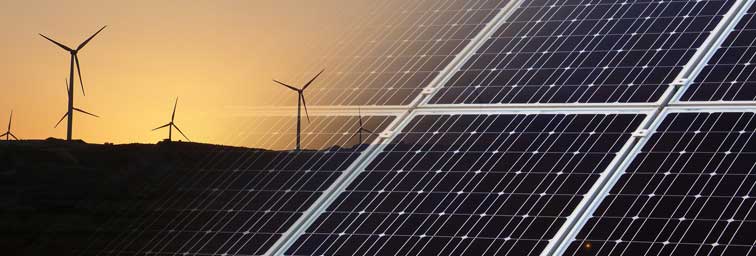
Renewables to the Rescue? The Myths, The Reality, and Why a Smaller U.S. Population is Needed to Save the Planet
- Edwin S. Rubenstein
- March 20, 2018
- Forum Papers
- Forum Paper
- 0 Comments
![]() Your gift helps publish and distribute materials like this.
Your gift helps publish and distribute materials like this.
Click here for a downloadable, printable PDF version
Renewables to the Rescue? The Myths, The Reality, and Why a Smaller U.S. Population is Needed to Save the Planet
An NPG Forum Paper
by Edwin S. Rubenstein
Can the U.S. economy run on renewable energy alone? That may seem like a fanciful question at a time when the incumbent President insists that climate change is a “hoax” and is determined to restore coal to its once preeminent role in the nation’s energy supply. But a few years back Mark Z. Jacobson, a prominent Stanford University professor of engineering, published a widely acclaimed article claiming that energy from the wind, the sun, and water could power nearly the whole shebang by midcentury.1 What’s more, it would be cheaper than running it on fossil fuels.
Academia struck back. A much anticipated counter-article, published in the Proceedings of the National Academy of Sciences – the same journal in which Professor Jacobson’s upbeat screed appeared – a group of 21 prominent scholars, including physicists and engineers, climate scientists and sociologists, took a fine-tooth comb to Jacobson’s methodology. Their conclusion was damning: Professor Jacobson relied on “invalid modeling tools,” committed “modeling errors,” and made “implausible and inadequately supported assumptions.”
The experts are not opposed to investing aggressively in renewable energy. But they argue, as does most of the scientific community, that other energy options – nuclear power, say, or natural gas coupled with technologies to remove carbon from the atmosphere, are likely to prove indispensable to the global effort to forestall global warming.
But with the stakes so high, the scholarly gloves came off. In an article published in the same journal Professor Jacobson argues that his critics’ analysis “is riddled with errors and has no impact” on his conclusions. When later interviewed by a New York Times reporter, he accused his critics of being shills for the fossil fuel industry, without the standing to review his work, adding that “Their paper is really a dangerous paper.”2
What is the concerned layman to think when (allegedly) brilliant scholars reach such diametrically opposed conclusions on our environmental future? A big dollop of skepticism is always advisable. There are often hidden agendas motivated by politics, the ideological orientations of various universities and think tanks, and, yes, self-aggrandizement on the part of researchers. With so much money at stake, each of the major renewable energy sources have attracted a cadre of well-funded special interest groups willing to spend lavishly to obtain the “right” conclusion.
Self interest aside, scoping out the future role of renewable energy is intellectually challenging. The two most prominent types – solar and wind – are both intermittent resources. You can install solar panels; you can build a wind farm, but if it’s cloudy, or not windy, no electricity will be produced. Solutions to this problem usually involve building excess storage capacity or drawing power from non-renewable sources like nuclear or even gas and coal. Not only is this expensive, it may exacerbate the very climate changes that renewables were supposed to combat.[…]
Continue reading the full Forum paper by clicking here.
- Hotels Say They Can’t Find US-Born Workers; Statistics Show They Don’t Try Hard Enough - April 23, 2024
- The High Cost of Cheap Immigration Detention - March 27, 2024
- Immigration Will Drive U.S. Population Growth Throughout the 21st Century - December 29, 2023

